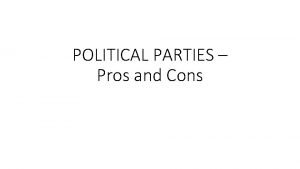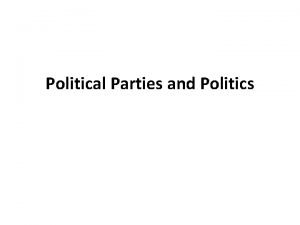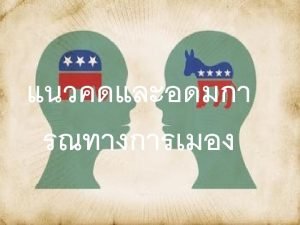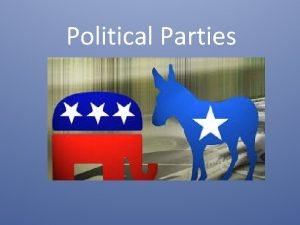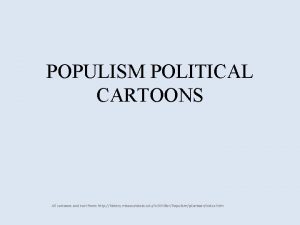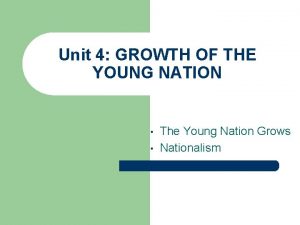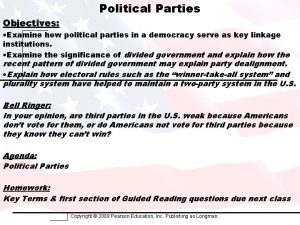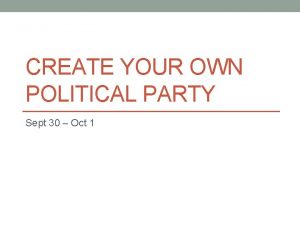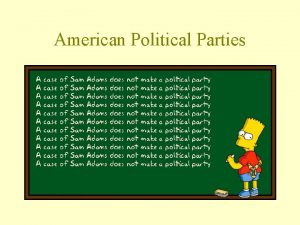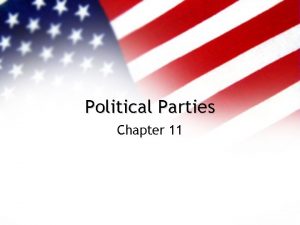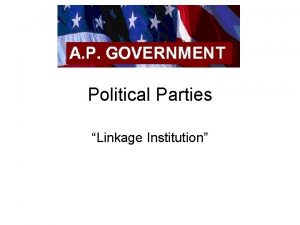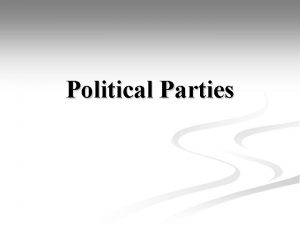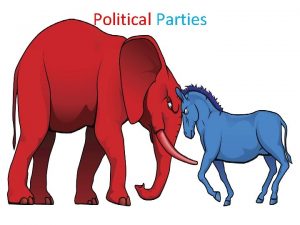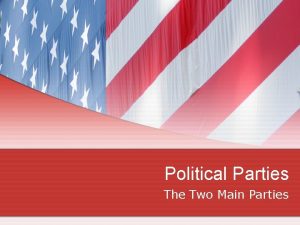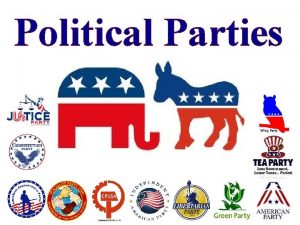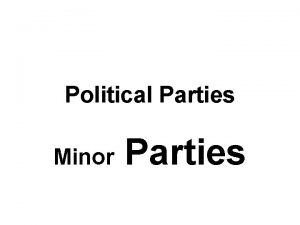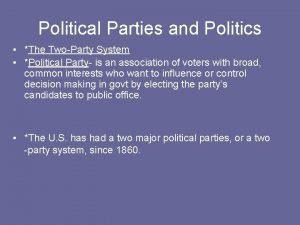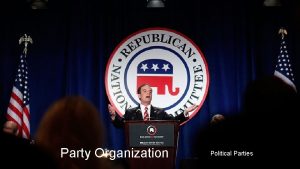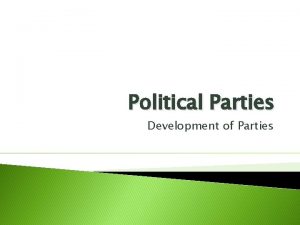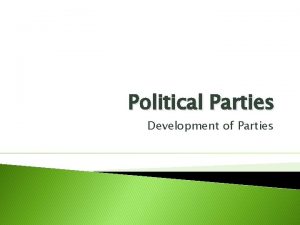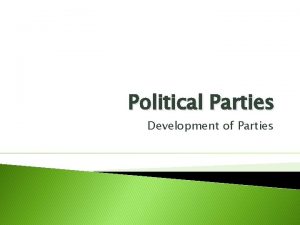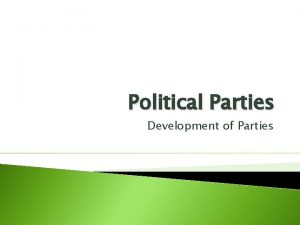Political Parties Party Systems and Party Roles TwoParty

















- Slides: 17

Political Parties • Party Systems and Party Roles • Two-Party System • America’s Party History • Minor Parties

What is a Political Party? • A Political Party is a group of people who share similar beliefs about government. • There are one-party, two-party and multi-party systems.

Party Systems 1. In a one-party system, the political party controls the government and does not let other parties form. 2. Examples include Mexico, China, Cuba, North Korea, Vietnam.

Two-Party Systems 1. The two-party system has two major parties which compete for control of the government. 2. The United States and about a dozen other nations have a two-party system.

Multiparty Systems 1. Multiparty systems are more common than two-party systems. 2. Common in nations with strong parliamentary systems. 3. Examples include Germany and Italy.

THE ROLES OF PARTIES 1. Recruiting and labeling: parties provide the labels in the minds of voters to help them identify a candidate’s political views. 2. Acting as watchdogs: can be critical of the opposing party or the party in control 3. Providing information: by presenting candidates’ views, the parties help citizens learn about current issues and problems

THE ROLES OF PARTIES 4. Running the government: Congress and the state legislatures are organized according to party affiliations…. (Speaker of the House is always a member of the Majority party).

Influence of Parties in the USA 1. The Party and Voters: voters may register as members of a political party or as “independent” • Only registered Party members can vote in Primary Elections…

Influence of Parties in the USA 2. Party Organization: parties are organized at the local, state and national levels. Decisions are often made from the “bottom up” instead of from the top down. (Grassroots) National party leaders must listen to the ideas of the local party members.

Influence of Parties in the USA 3. The Party and Government: parties play a key role in running and staffing the government.

America’s Two-Party System 1. Historical Influence: the nation began with two political parties (Federalists and Anti-Federalists) 2. American Political Beliefs and Values: most Americans share a basic set of beliefs and values which one of the two parties embraces

America’s Two-Party System 3. Winner-Take-All System: the presidential candidate who wins the election in a state captures all of the state’s electoral votes

Parties in American History 1. Federalists vs. the Democratic. Republicans (1796 -1828) 2. Democrats vs. Whigs (1828 -1860) 3. Democrats vs. Republicans (1860 -1932) 4. Democrats vs. Republicans (1932 -1968) 5. Democrats vs. Republicans (1968 present)

Minor Parties • Minor parties: also called “third parties” • Minor parties might be: – Economic protest parties (ex. Populists) – Splinter parties: a party which splits from a larger party (ex. Progressive “Bull Moose”) – Ideological parties: have beliefs vastly different from the 2 major parties (ex. Communist) – Single-issue parties: have one basic goal (ex. Right to Life, Free Soil, Marijuana Reform)

The Green Party The Greens/Green Party USA is the original Green Party organization in the USA. It carries forward the radical vision of the early Greens based on grassroots political and economic democracy, nonviolence, social justice, and ecological sustainability. Formed as the Committees of Correspondence in 1984, the annual Green Congress changed the name to Green Committees of Correspondence in 1989 and to The Greens/Green Party USA in 1991.

The Green Party The Greens carry forward the traditional values of the Left: freedom, equality, and solidarity. We want to create a truly democratic society without class exploitation or social domination. But Greens expand this notion of a classless, nonhierarchical society that is harmonized with itself to include an ecological society that is harmonized with nature as well.

Libertarian Party The Libertarian Party is committed to America's heritage of freedom: individual liberty and personal responsibility a free-market economy of abundance and prosperity a foreign policy of non-intervention, peace, and free trade.
 Political parties pros and cons
Political parties pros and cons Win the white house brainpop
Win the white house brainpop What was one way progressives differed from populists
What was one way progressives differed from populists Political parties
Political parties Political parties
Political parties Political parties
Political parties Wikimedia
Wikimedia Political parties
Political parties Third and fourth party logistics
Third and fourth party logistics Interactions between ais and internal and external parties
Interactions between ais and internal and external parties Populist political cartoon
Populist political cartoon Election of 1824 map
Election of 1824 map Objectives of political party
Objectives of political party Create a political party project
Create a political party project Kathy cocuzzi political party
Kathy cocuzzi political party Political party
Political party Political party
Political party Political party project
Political party project
